ThruNite Ti firely and regular version


ThruNite started a few years ago with a small light, then they added a very good thrower (Catapult) and has lately added lots of other lights to their range. The light I am looking at here is their first AAA light. This light is a two brightness level light, where the two brightness levels is selected depending on how tight the light is twisted together. The light is made in two versions with different low level. The light is made of aluminum with hard-anodized (Type 3) finish.
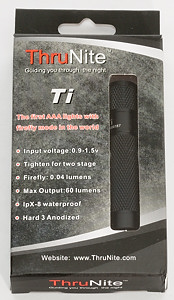
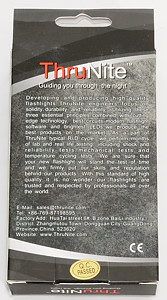
The light is delivered in a cardboard box with a window. Some of the specifications are printed on the front of the box.

The box contains the light, two o-rings, a split ring and a user manual.

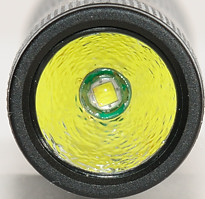

The light has a OP (Orange Peel) reflector with the XP-E led at the bottom.
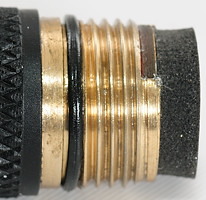
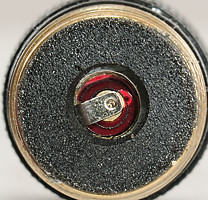
The inside of the head is made in brass, this gives a very good quality thread. There is a foam ring on the head, this works as polarity protection, reduces battery rattle and is part of the switch mechanism. The level switch is the small piece of metal in the center, when the battery touches the metal the light will turn on in low mode, tighten the light a bit more will bend the metal and the light will switch to high mode. From low to high is less than 1/8 turn of the head.
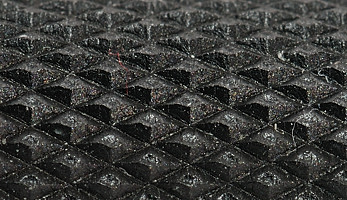
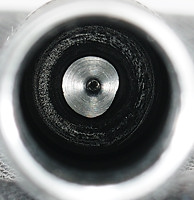
Both the head and the body is covered with ample knurling. The light does not have a spring in the body tube, this is not possible with this type of switch.
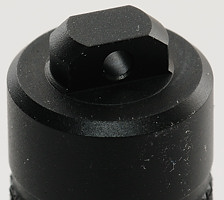
On the tail of the light is a hole for the o-ring. This makes the light bad at tail standing, but makes it very good for keychain use.

Here is all the part the light can be disassembled in without tools.
The light is a nice simple to use keychain light that works well on alkaline batteries and has a good performance for the price. The model with the firefly settings is useful for navigating indoor, without disturbing other people or it can be used as a night light. The regular model with a 3 lumen low gives a better light for navigating without night adapted eyes.
Technical specification and measurements
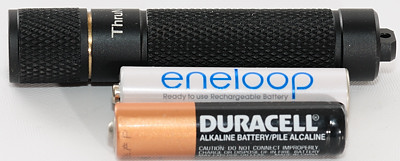
This light is designed for 1.5 volt AAA batteries (Alkaline and NiMH).
Measured size and weight:
Length: 74 mm
Diameter: 14 mm to 14.4 mm
Weight: 28 gram with eneloop
The light uses a Cree XP-E led.

In the above table I have collected all modes for the firefly model, measured at both 1.2 volt and 1.5 volt. All the estimated runtimes are with 800 mAh eneloop batteries. The estimated lumen is scale from the specified maximum. The brightness is a relative measurement from a lux meter.
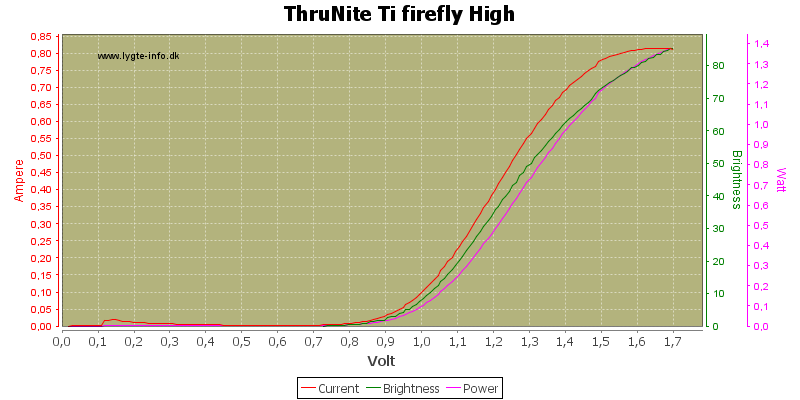
The light does not stabilize brightness, instead the brightness is directly proportional to the battery voltage. This keeps a more moderate current draw on the batteries and with alkaline avoids the fast brightness drop when the battery is empty. It is interesting to see that the power consumption does follow the brightness very closely, this means that the driver keeps a nearly constant efficiency.
This light can use all the energy in a AAA battery.

This curve is from the other Ti light, it has a higher brightness at low voltage (This might or might not be related to its higher low level).
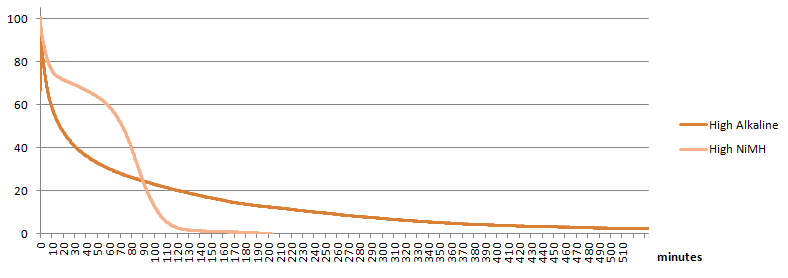
On the runtime curve the lack of stabilization is obvious. This lack of stabilization does make the light very useful on a alkaline battery, it will have a very long runtime while slowly reducing brightness.
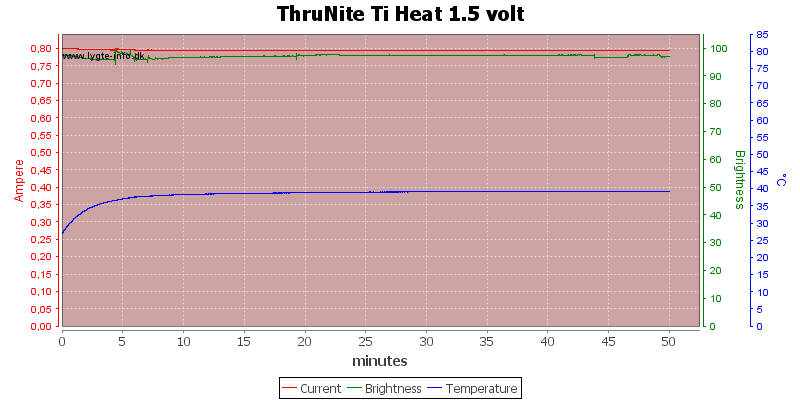
I did a temperature test to see how well the light handles the heat from the led. I did run the test at 1.5 volt, this is higher than a alkaline or NiMH will sustain. The light does not have any problems with heat, it only warm up a little and then keeps full brightness while staying at this temperature.
Note: My test does not simulate actual usage conditions, but are done on a test bench with only the head of the light and no cooling airflow, i.e. the light will get hotter than during normal use.
The light does not use pwm and only has a small amount of high frequency noise in the light and no flashing modes.
Comparison to other Flashlights
ThruNite Ti, Olight i3, 4Sevens Preon:
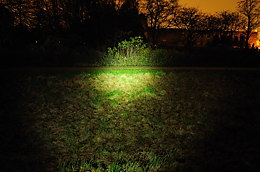
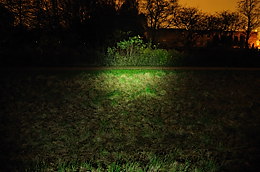
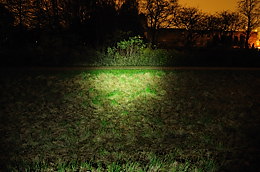
Fenix E01, Fenix E05, Fenix LD01:
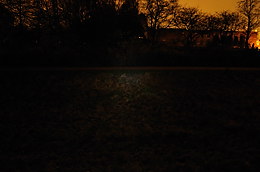
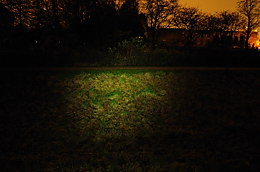
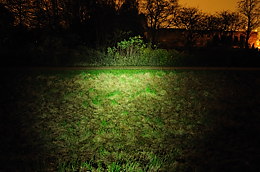
For the full comparison to other lights with graphs and beamshots see here.
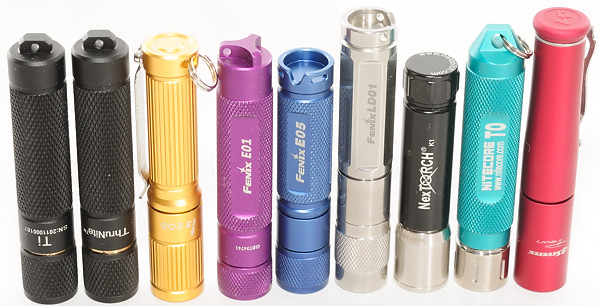
Notes
The light was supplied by ThruNite for review.
Sadly I had an accident when testing, a probe slipped and I destroyed one of the lights, before I was finished with the technical analysis.


























